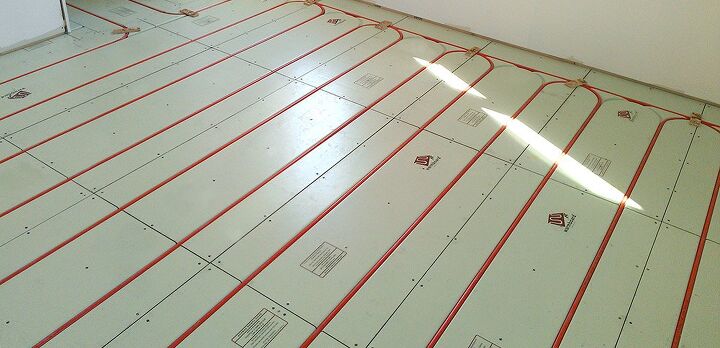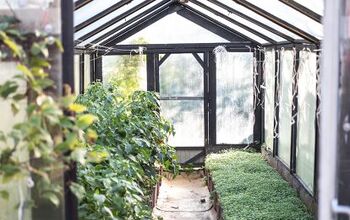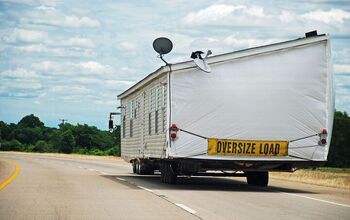How Much Does Warmboard Cost?

Radiant floor heating is a luxurious feature to have in the home and a current popular trend in new constructions. While it’s hard to deny that underfloor heating is the most comfortable way to warm your home, many folks find themselves wondering if it’s worth the hassle and associated costs. There are a number of radiant heating systems to choose from, with Warmboard being one of the best on the market.
The average cost of Warmboard is $14,000 per floor of a home. Homeowners spend an average of $11 per square foot to install Warmboard panels. You can save money with Warmboard, and it is 30% more affordable than alternatives such as Ecowarm.
With that said, let’s take a deeper look at Warmboard, the products and services they offer, what radiant heating is, and how the technology works.
Don't want to do it yourself?
Get free, zero-commitment quotes from pro contractors near you.

What is Radiant Floor Heating?
Also called floor heating or underfloor heating, is a form of central heating and cooling that accomplishes indoor climate control for thermal comfort by using heating elements powered by water or electricity. These panels may be embedded in the floor, ceiling, or walls of your home. Though, when the radiant heating is installed in the floor, it is often called floor heating or radiant floor heating.
The system mostly relies on radiant heat transfer – which refers to the delivery of heat from the hot surface of the panel to the objects and people in the space via infrared radiation. The easiest way to describe radiant heating is that effect that you feel the warmth of a hot stovetop element from the other side of the room. It also depends heavily on convection, or the natural circulation of heat in the room as the air warmed by the floor rises up. There are three main types of radiant floor heat:
- Air-heated radiant floors. This system involves air as the heat-carrying medium. Since air cannot hold a large amount of heat, this type of radiant flooring is not ideal for residential applications.
- Electric radiant floors. These systems usually feature electric cables embedded in the floor. Because of the relatively high cost of electricity, these types of radiant floors are usually only cost-effective if they involve a substantial thermal mass like a thick concrete floor. If it’s large enough, the heat stored inside will keep your home comfortable for eight to ten hours without any additional electrical input.
- Hydronic radiant floors. Hydronic (liquid) systems are the most cost-effective and popular option, especially for heat-dominated climates. They pump heated water from a boiler through tubing oriented in a pattern underneath the floor.
What is Warmboard?
Warmboard describes their whole-home heating system as “the premier radiant heating solution in North America.” Created in 1992 by architect and entrepreneur Terry Alsberg, Warmboard has become one of the fastest-growing and most sought-after radiant floor heating systems. Made of thick aluminum, their panels boast faster response times, easier installation, superior comfort, and lower energy use than competitors.
When compared to other systems, Warmboard is more conductive – a trait that is crucial to any radiant heating system. As conductivity increases, water temperature decreases, meaning you’ll save money and enjoy more energy-efficient heating when the system heats water to a lower temperature. This will decrease energy use, lower your energy bills, and extend the life of the equipment.
Low water temperatures allow Warmboard to effortlessly integrate with geothermal and solar systems without any additional hardware required. Warmboard offers the fastest response, with the ability to heat your home in minutes rather than hours or days – delivering constant comfort. Not to mention, the even surface temperatures mean that the panels can be installed under a wider variety of flooring options, from ornate hardwoods to thick carpeting.
Warmboard Panels
Warmboard offers two products: Warmboard-S and Warmboard-R. Warmboard-S is a structural subfloor and radiant heating panel all in one. It is made out of Douglas Fir 7 ply plywood, is 1 1/8” thick, and comes in full-faced tongue and groove 4-foot by 8-foot sheets. This panel is most often used in new construction and is typically installed directly over joists.
Warmboard-R, on the other hand, is a thinner, smaller radiant panel. It is made out of aspen and pine-oriented strand board (OSB), is approximately 13/16” thick, and comes in square-edged 2-foot by 4-foot sheets. This panel is usually used in remodels, as it is installed over an existing subfloor or slabs. Though, it is also sometimes used in ceilings and walls when the original floors need to remain intact.
An Architect’s Review of Warmboard Radiant Panel
How Does Warmboard Work?
A radiant panel, like Warmboard, works by conducting heat from water located in a tube to the surface of the floor and out into your home. It’s as simple as that. This is exactly why conductivity is the most crucial thermodynamic property in a radiant heating system. The higher the conductivity, the more efficient the transfer of heat will be. As such, there is a reason why Warmboard panels are made from aluminum rather than concrete.
What sets Warmboard apart from its competitors is that the panels are engineered to take full advantage of the laws of thermodynamics. The aluminum alloy that Warmboard panels are made out of is 30% more conductive than any other radiant system. Warmboard’s thick aluminum plate covers every inch of the panels and remains in direct contact with your finish floor material, guaranteeing that heat will pass easily throughout your home.
Find out how much bamboo flooring costs.
Warmboard Costs
One of the major drawbacks to radiant heating systems – Warmboard included – is the high upfront costs. It’s safe to estimate that the cost of a radiant heating system is between $10 and $20 a square foot installed, depending on the specific system that you choose. Though, Warmboard is notoriously more expensive than all their other competitors. The only fool-proof, accurate way to know the price you can expect to pay for a radiant heating system from Warmboard is to reach out to a representative for a quote.
Though, previous customers claim that Warmboard-R tends to be about 30% more expensive than Ecowarm (one of their biggest competitors). Also, one homeowner reported that they were quoted about $14,000 for just the Warmboard panels on the first floor of their home. This number does not include any additional costs related to installation and labor.
Though, here is a relatively common breakdown of labor for who handles the installation of what with the Warmboard Comfort System:
- Framing Crew: Warmboard Panels
- Plumber: Tubing, venting, copper, manifolds, Warmsource, and condensate and gas lines
- Electrician: J-Boxes, Manifold Controller, thermostats, 110V AC per device
Advantages of Warmboard Radiant Floor Heating
While Warmboard is expensive, the high upfront costs are outweighed by the numerous benefits of having radiant floor heating in your home. Here are some of the advantages you can expect to enjoy when you choose Warmboard:
1. Energy Efficiency
Research suggests that radiant floor heating is roughly 25% more energy-efficient than forced air. However, when it comes to Warmboard, that percentage is even higher because of the lower water temperatures and enhanced control. In fact, the savings you can expect with certainly offset the initial cost of Warmboard.
Water heaters and boilers run more efficiently at lower temperatures, which increases savings. Not to mention, when these appliances run at lower temperatures, their lifespan is extended which ensures that your investment can be enjoyed for longer.
2. Maintenance-Free
Once installed, Warmboard is effortless to run and requires virtually no maintenance. Warmboard Panels also come with a lifetime warranty, for the lifetime of the structure into which they are initially installed.
3. Superior Performance
Warmboard annihilates the competition with its ability to provide necessary heat output in jus 20 minutes. Many other products take three to seven times longer to achieve the same output. With this speed, the product takes advantage of lower temperatures, lowering your heating bill, increasing life span, and improving performance. The even surface temperatures also increase comfort, while keeping your flooring protected.
4. Safety & Comfort
With Warmboard, you no longer have to worry about hot surface and sharp edges on your radiator when you have younger individuals in the house. Radiant heating systems are safely tucked away and out of reach of children. Warmboard, and radiant heating in general, is almost much better for the air quality in your home. It keeps your air fresh and oxygen-rich, while radiators reduce oxygen levels, increase discomfort, and circulate dust in the air.
5. Works With All Floor Coverings
Warmboard offers the freedom to design your home exactly how you want, taking advantage of all your floor space. Fortunately, you are also free to choose the floor covering that you want as Warmboard is designed to work with nearly any floor type – including tile, wood, laminate, carpet, stone, and more.
Don't want to do it yourself?
Get free, zero-commitment quotes from pro contractors near you.

Related Questions
What comes with the Warmboard Comfort System?
The Warmboard Comfort System, or WCS, comes with the panels (Warmboard-S or Warmboard-R depending on the need), PEX tubing, mechanical designs, actuators, manifold, all the necessary plumbing components, Warmsource (boiler with pump and expansion tank), manifold controllers, thermostats, and bridge.
What type of insulation should be used under Warmboard?
Warmboard recommends standard fiberglass batt insulation with a minimum value of R-19. Though, it’s important to note that foil-backed insulation is not needed with Warmboard.
Do Warmboard panels interfere with WiFi?
Though it’s rare, depending on the home, the aluminum in Warmboard may interfere with WiFi signals. The current WiFi routers that use 802.11n protocols (or later) seem to have fixed this problem.
Related Articles

Jessica considers herself a home improvement and design enthusiast. She grew up surrounded by constant home improvement projects and owes most of what she knows to helping her dad renovate her childhood home. Being a Los Angeles resident, Jessica spends a lot of her time looking for her next DIY project and sharing her love for home design.
More by Jessica Stone



























